Schwalbe is kind of reinventing the wheel with their new Radial mountain bike tires. It’s a simple but incredibly effective shift in tire construction that reshapes how an MTB tire can stick to the ground, even at higher pressure than before. At the same time, there’s an all-new Albert all-rounder that’s the face of this seismic radial shift in tire construction, in addition to another new soft-conditions tread & a version of the classic Magic Mary with the new tech.
Plus, both Trail & Gravity versions of the groundbreaking new Radial casing make it a versatile option for aggressive trail riders to all-mountain riders, and especially to enduro & DH racers. In fact, it’s already been raced to 9 World Cup DH victories including two wild wins by Amaury Pierron this year with massive time gaps.

This feels like a pretty big deal, getting extra grip almost for free. We’ve been riding these Alberts for a month and a half now across all types of trails and bikeparks and in all conditions. And it does feel like a game-changer…
Schwalbe Radial Trail & Gravity mountain bike tires

Probably the biggest driver in mountain bike tire development almost exclusively comes down to what a tire maker can do to get more grip. Ultimately it’s a balance. Lighter construction and faster-rolling rubber dominate in XC. But pretty much every other mountain biker wants more grip. Softer rubber can only go so far, without just feeling slow or simply wearing too fast.
Just over a decade ago, Schwalbe significantly reduced the number of layers in their tires for more flexibility – with the Super Gravity carcass – but that also reduced puncture protection. Then almost immediately, they tried to drastically lower tire pressure – with the security of ProCore inside – but that didn’t prevent snakebites, reduced cornering stability, and was overly complicated. So the German tire engineers kept hunting for a solution that maximized the tire’s small contact patch touching the trail, without sacrificing support or reliability.
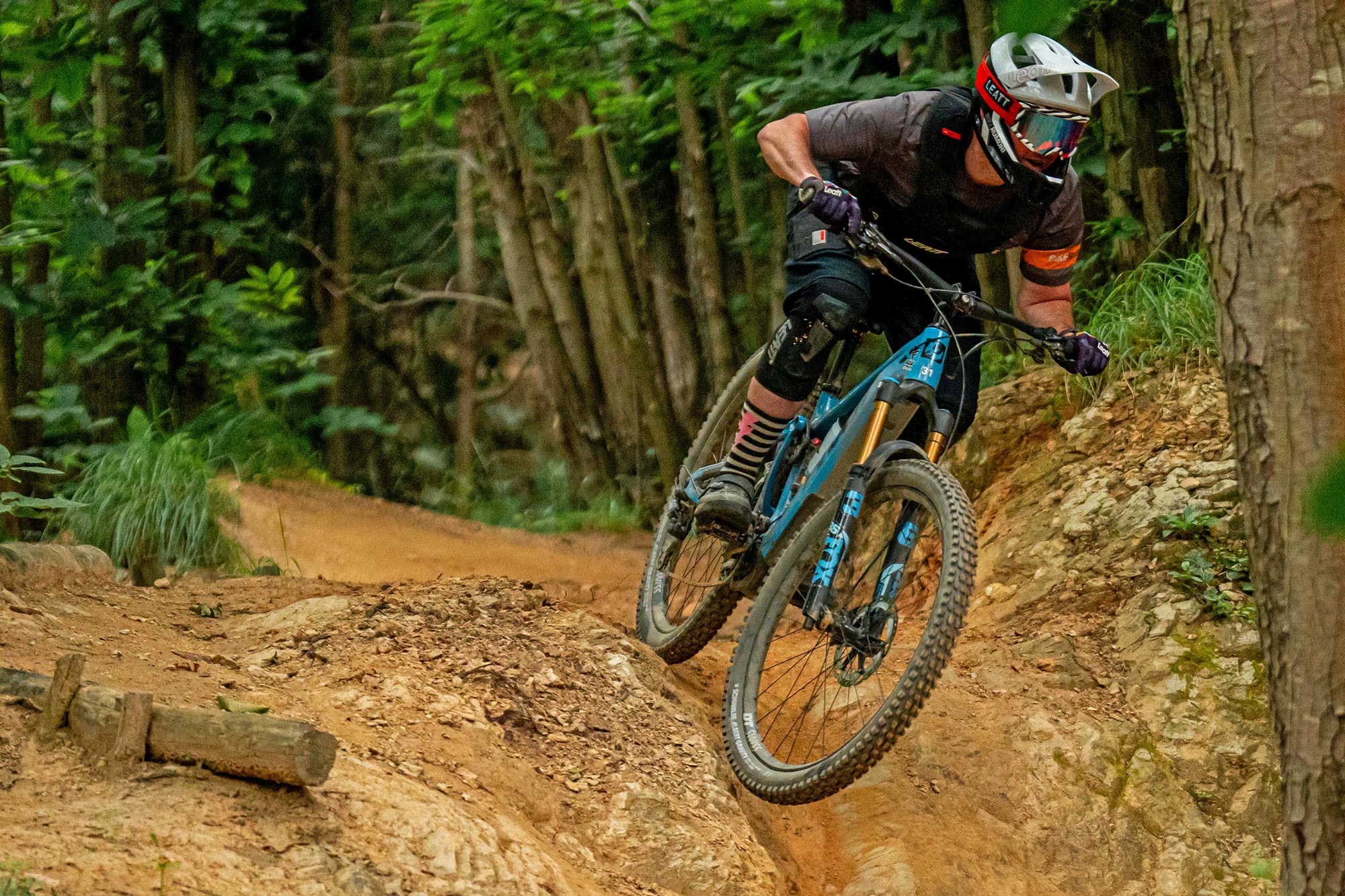
And they landed on Radial tires, or at least more radial…
What is a Radial tire & why do all bicycle tires use Bias-Ply construction?
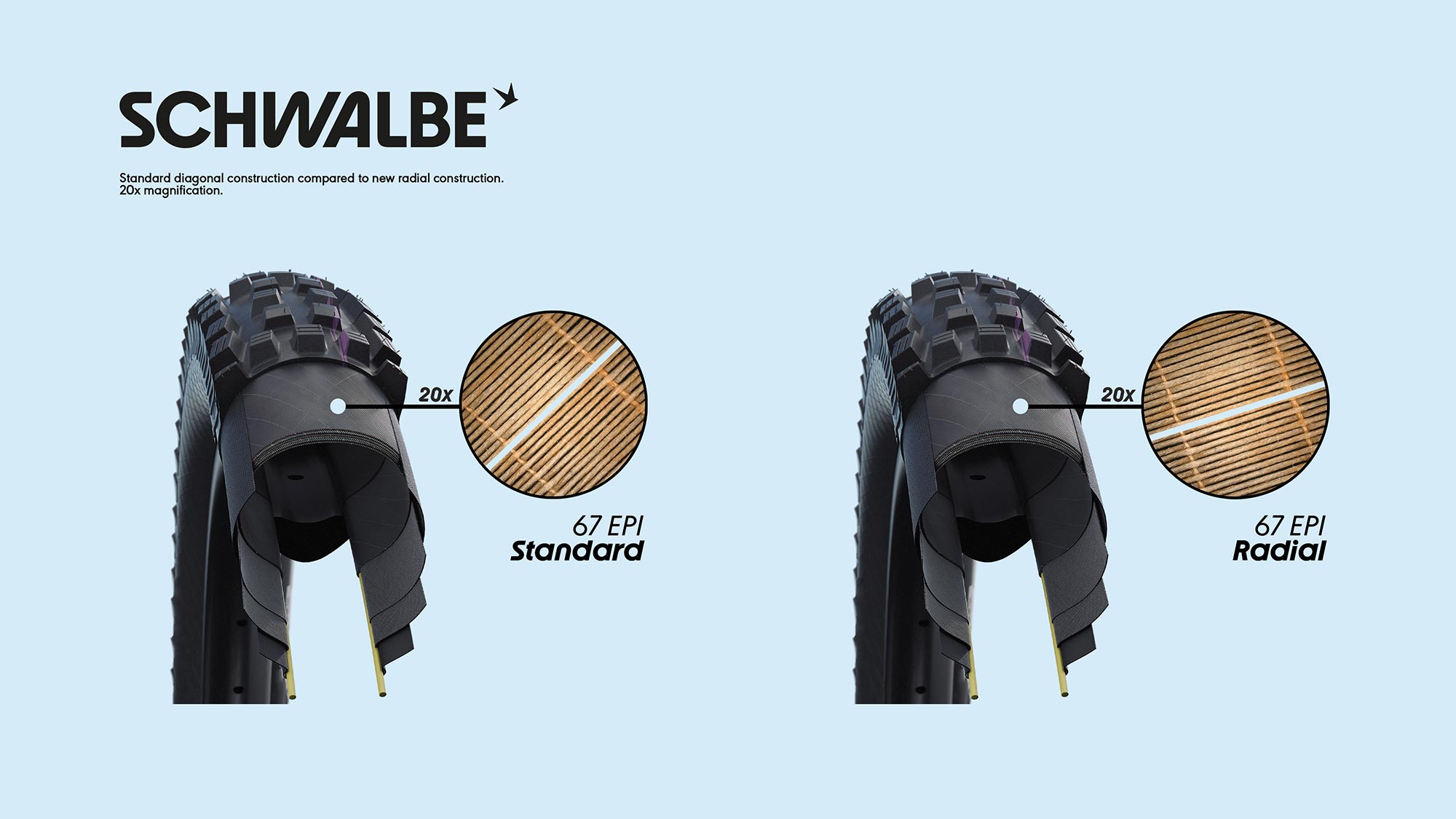
Put simply, radial tires (like in your car) have a main structure of fibers that go straight up the sidewall from the rim, straight across the tread, and straight down the other sidewall back to the rim. Radially from the center of the wheel/tire combo. They have great flex characteristics and a smooth ride but generally require stiff belts of tough fibers (or steel) to support the tread.

Bias-Ply tires use a 90° crossing structure of fibers, generally angled 45° from the direction of travel, and alternating back and forth. Fibers are arranged in a bias, or diagonal orientation. This makes it easy to create a lightweight and round profile tire with low rolling resistance, and predictable sidewall & overall support.
Now Schwalbe has created something in between.
Schwalbe’s almost Radial mountain bike tires
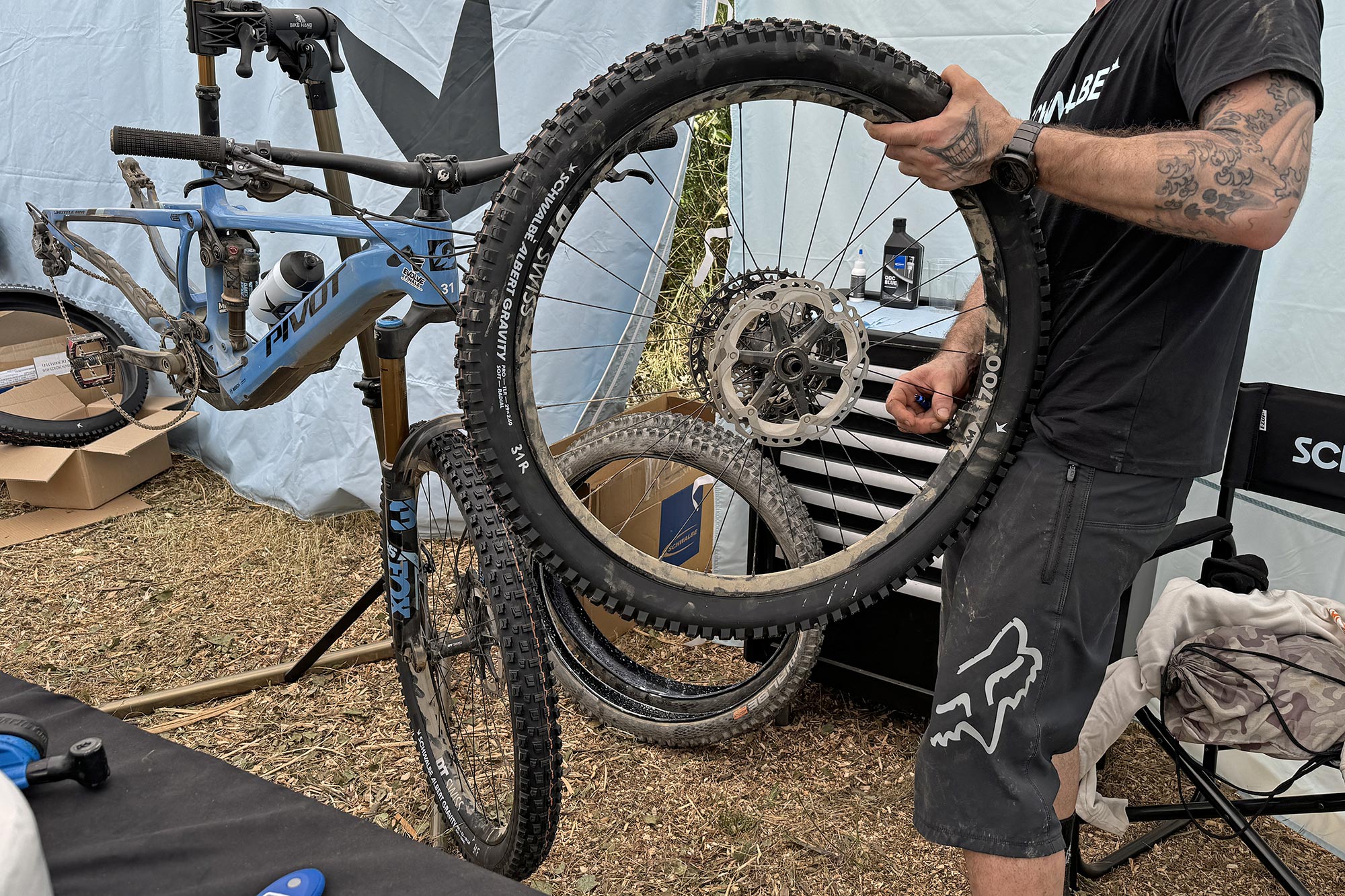
So radial tires are nothing new (Wikipedia tells me they were first patented in 1914), but they never really made their way to bicycles. And Schwalbe’s new Radial mountain bike tires aren’t entirely radial… just more radial. They settled on a smaller angle – somewhere between 10-20° – that lets Schwalbe get radial benefits without the need for extra belt support.
Schwalbe says much of the performance improvement comes from the ~25% shorter support fibers in the more radial construction vs. the conventional bias-ply tire. And since the fibers travel straighter across the tire casing, the distance that shorter, slightly angled fiber covers in the direction of the tire’s movement is reduced by almost 75%. That effectively means that if the tire hit a perfectly sharp edge that deformed the tire from bead-to-bead, in a conventional tire it could impact 100 fibers but in the new Schwalbe Radial tire it would hit only 25.
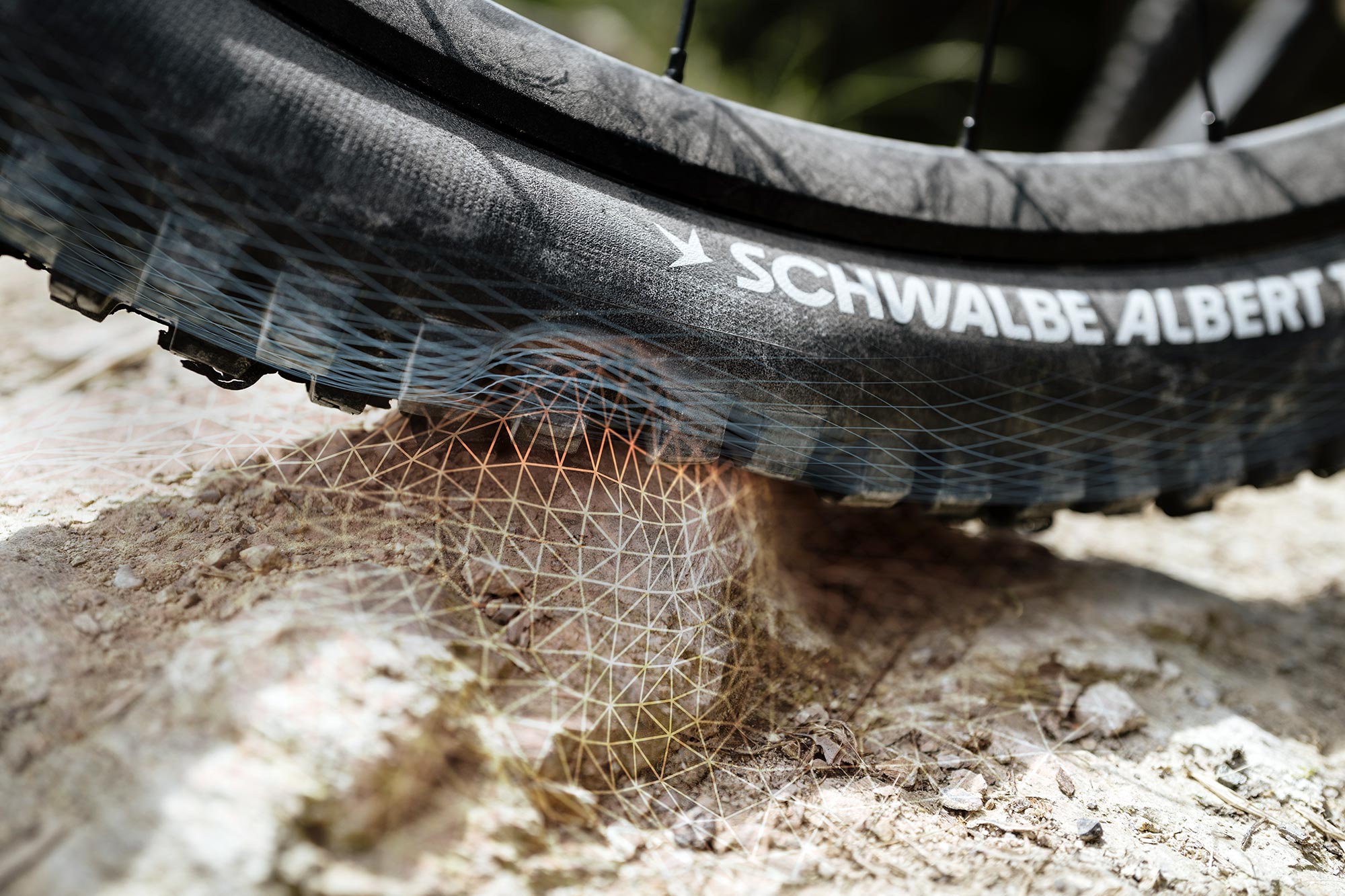
Less tension in the thread, fewer intersections between threads, shorter threads, less threads engaged at any specific impact. All helping the tire be more flexible under the tread.
What are the real benefits?
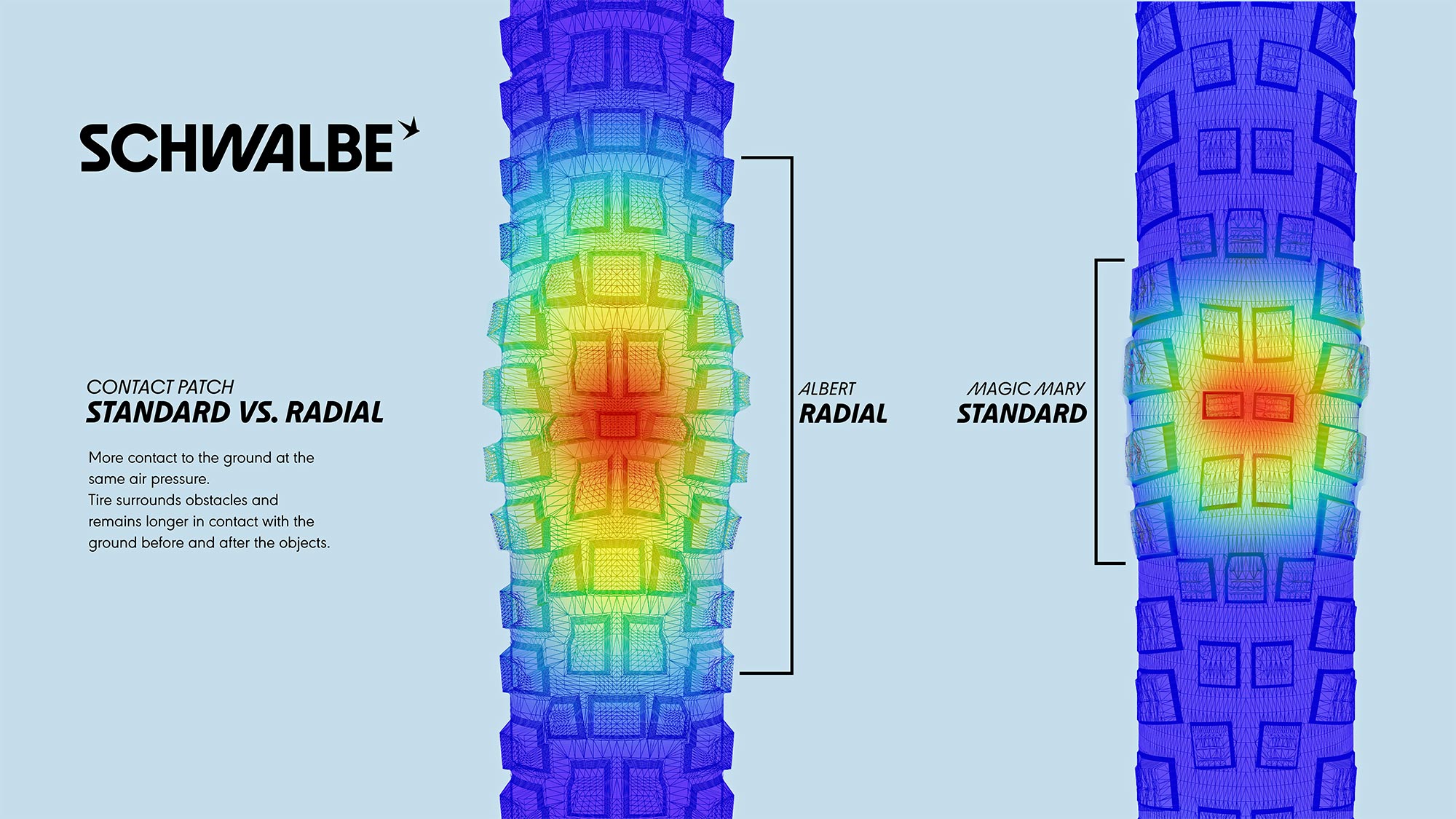
So, all that means more flexibility and more local deflection of the tire at the point of contact with an obstacle. That lets the treadblocks roll around an object to get more grip, but in a smaller area so you don’t sacrifice stability.
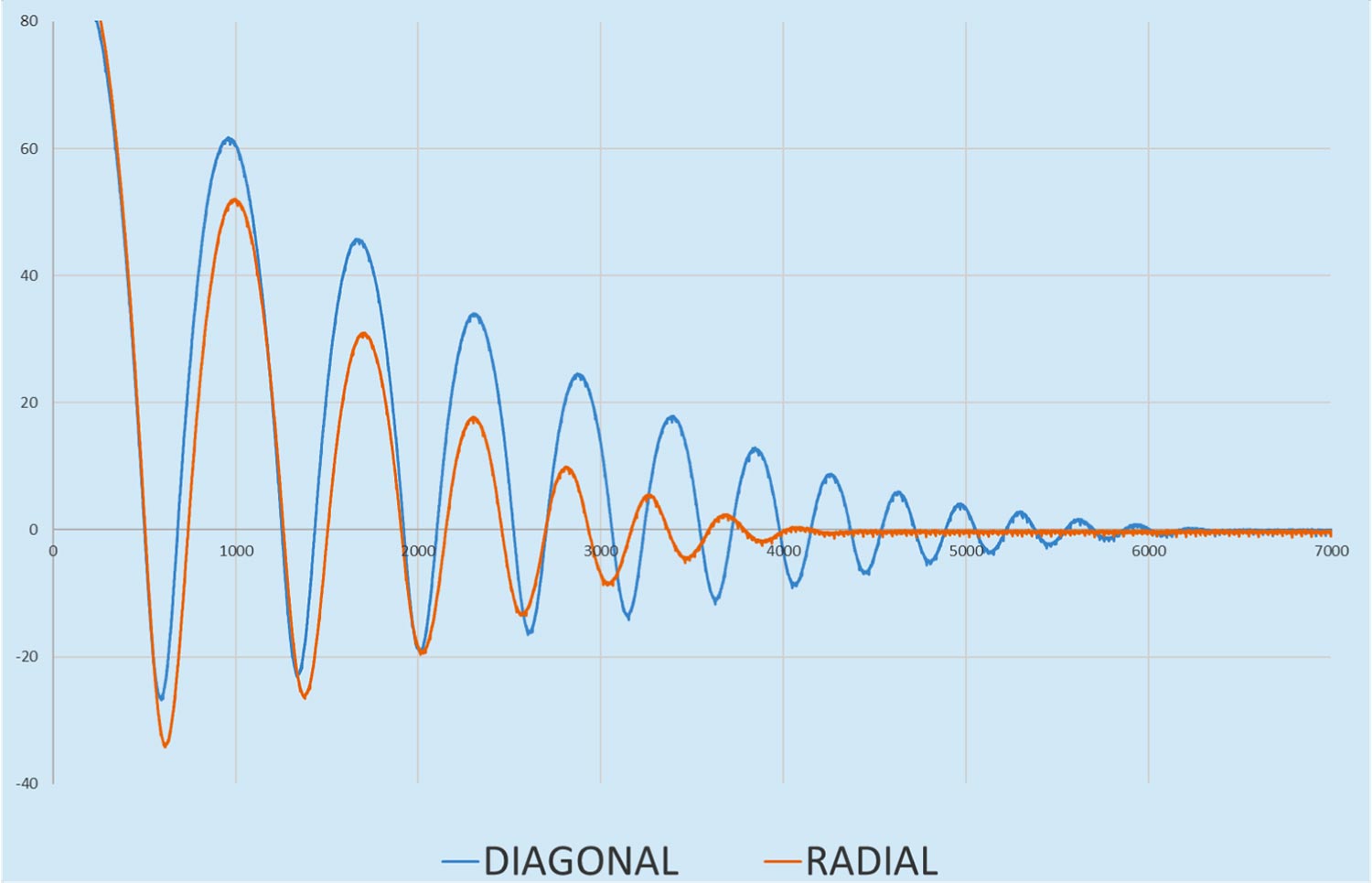
It also helps slow tire rebound, damping pressure spikes in the tire for a smoother ride and improved “control, grip, and comfort off-road”.
And the somewhat surprising benefit of a more local deflection is you get a larger contact patch at the same pressures. Schwalbe says it’s a 30% increase in the contact area, without lowering tire pressure. The huge benefit here is that you can actually increase tire pressure by +7psi/0.5bar in the Radial tire and still have a 10% larger contact patch than the conventional bias-ply tire.
That’s huge actually. So, more support and flat resistance AND more grip. Schwalbe even says you can run a less aggressive tread and get the same grip, with improved rolling resistance. And the Radial tires come in at the exact same weight as the old Super Gravity casing.
And the downsides?
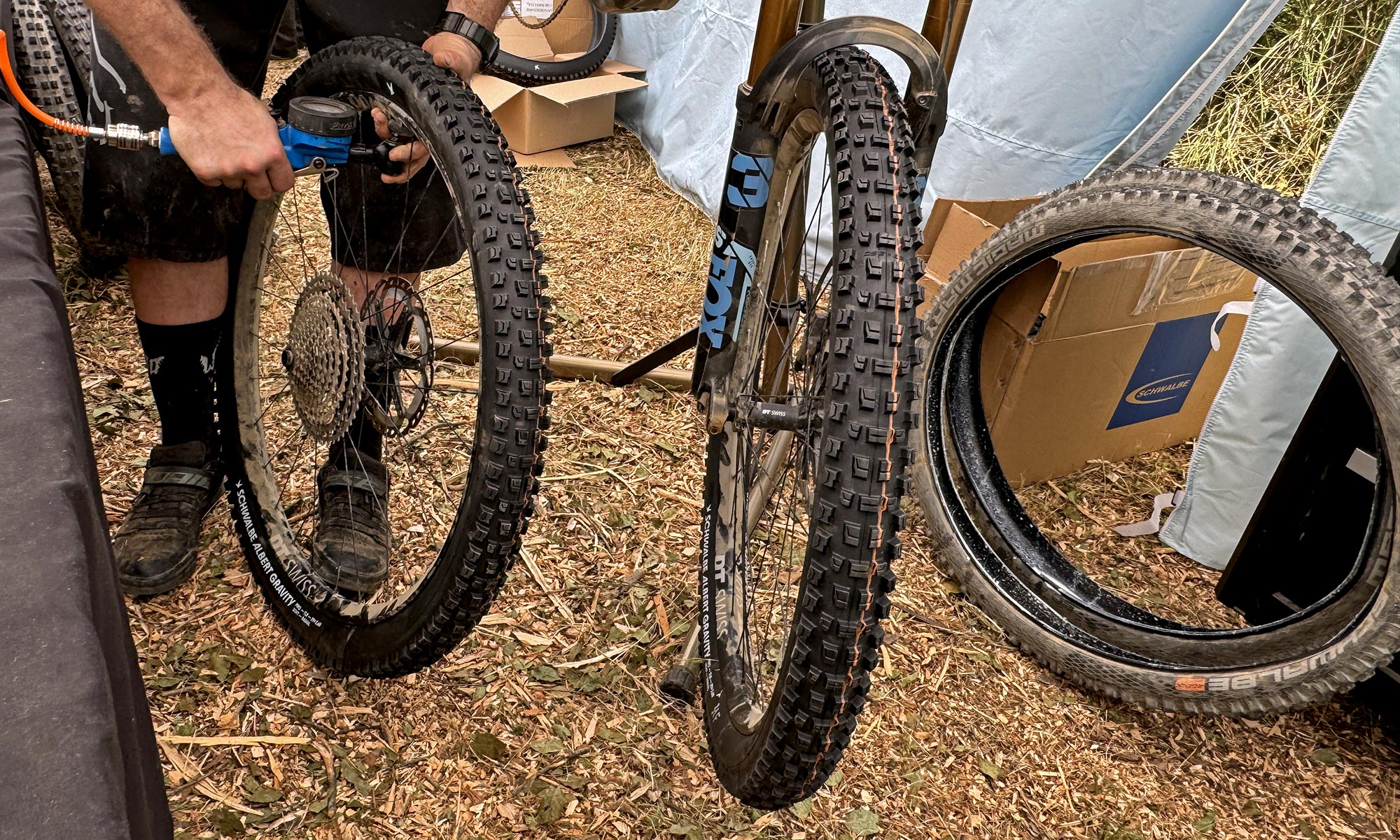
More tire flex does mean a bit of increased rolling resistance, so you won’t see Schwalbe Radial tires blowing up the XC, gravel, or road scene right away. (But it seems this new Albert Radial has more grip and lower rolling resistance vs. the conventional Magic Mary, so there does seem like some possibilities for mixing up tread patterns to get back that extra drag.)
The other negative is slightly reduced resistance to snake bites. But Schwalbe says they can use the same sidewall reinforcing construction as their previous generation of mountain bike tires without negatively affecting the radial performance, so there’s plenty of room to dial protection in to suit each type of riding.
Now back to the new Albert tread, itself

The new Schwalbe Radial construction will be available in three families – Albert, Magic Mary & Shredda – all intended for longer travel all-mountain to gravity bikes and eMTBs.
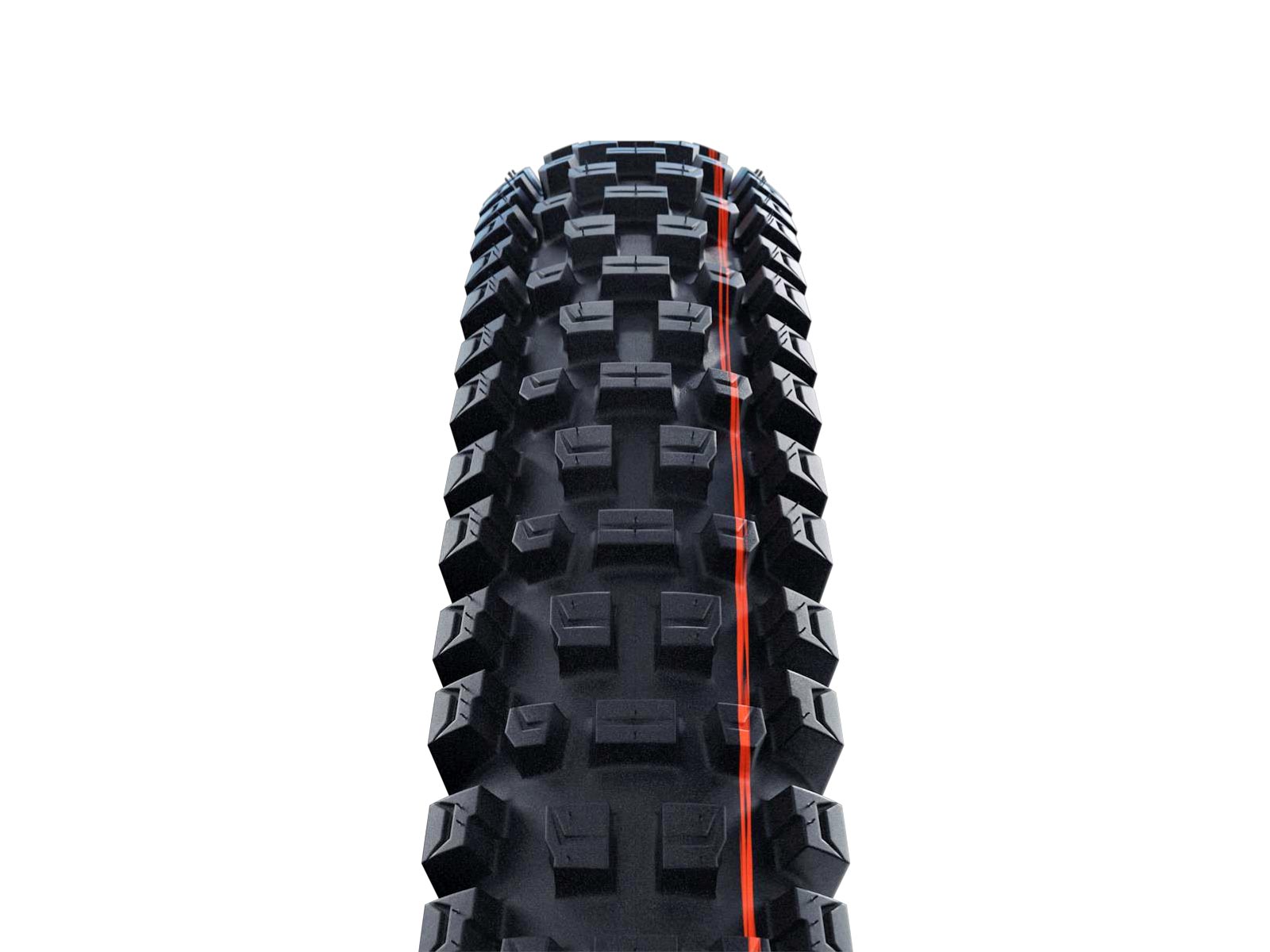
The all-new Albert is the most well-rounded of the three, pairing chunky medium-height tread blocks with a relatively tightly-spaced layout for all-around versatility.
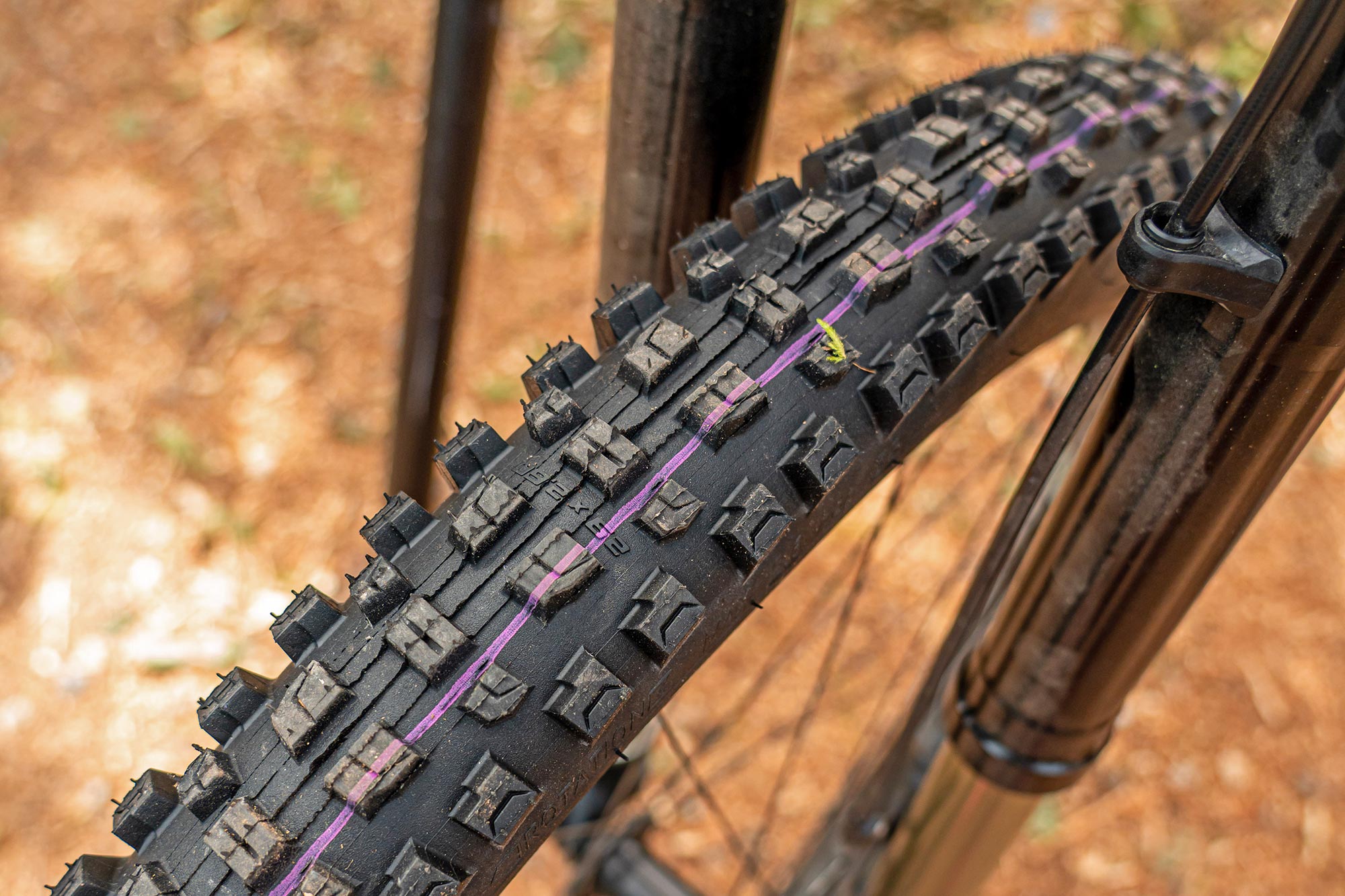
It has a round shape and smooth transition from knob to knob, leveraging the Radial flex so more rubber on the trail means more traction.

It’s much more aggressive than a Nobby Nic or Wicked Will trail tire. But at the same time easier to manage than the race-focused Tacky Chan or the more open loose conditions Magic Mary.
Albert First Impressions

This isn’t meant to be a conditions-specific racing tire – and does favor hard trail surfaces over soft loam. Albert is the solid and predictable tire you put on your enduro bike at the start of the season and just ride it no matter how the weather or trail conditions change.

We’ve been doing that for the past couple of months, riding everything from Finale to Leogang to 4 Czech bikeparks and a number of natural trails.

From wet rocks & roots, slick mud, to loose rocks to smooth hardpack and deep dusty corners, and the Alberts have been incredibly predictable – often offering grip when we had low expectations.
And the new Shredda tread, too
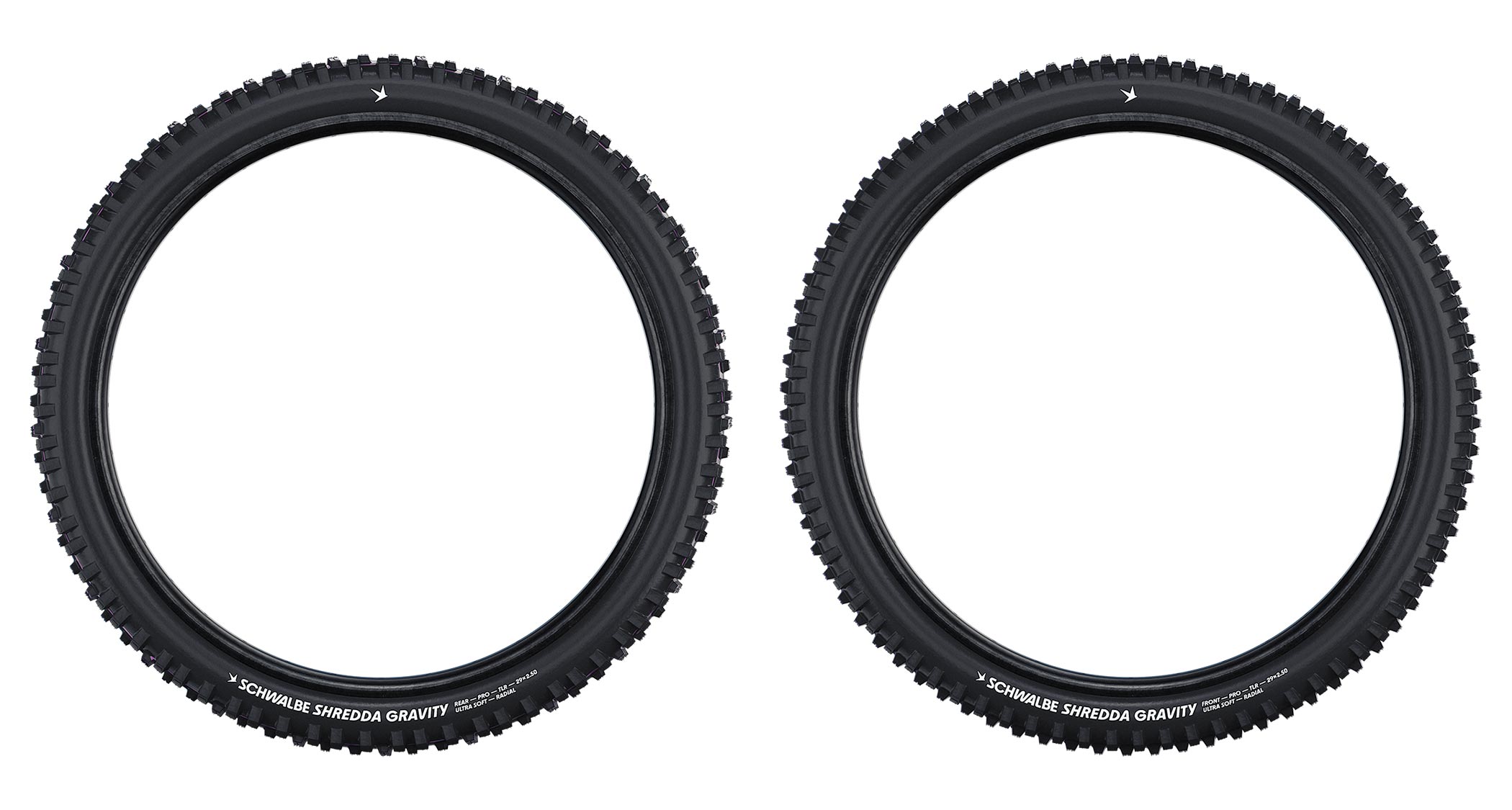
We haven’t had a chance to try the taller, more open, wet conditions Shredda. But it’s kinda the absolute opposite to Albert.
This is a very conditions-specific enduro and DH race tire. It’s big and open with tall spikes that overhang the sidewall to claw for grip, inspired by enduro motocross motorcycle tires. You get taller open spikes on the front-specific Shredda and more of a paddle layout on the rear-specific tire. Like the Albert though, the Shredda tread blocks are said to be optimized for the more locally-flexible Radial tire construction, so they fold over an obstacle for improved grip.
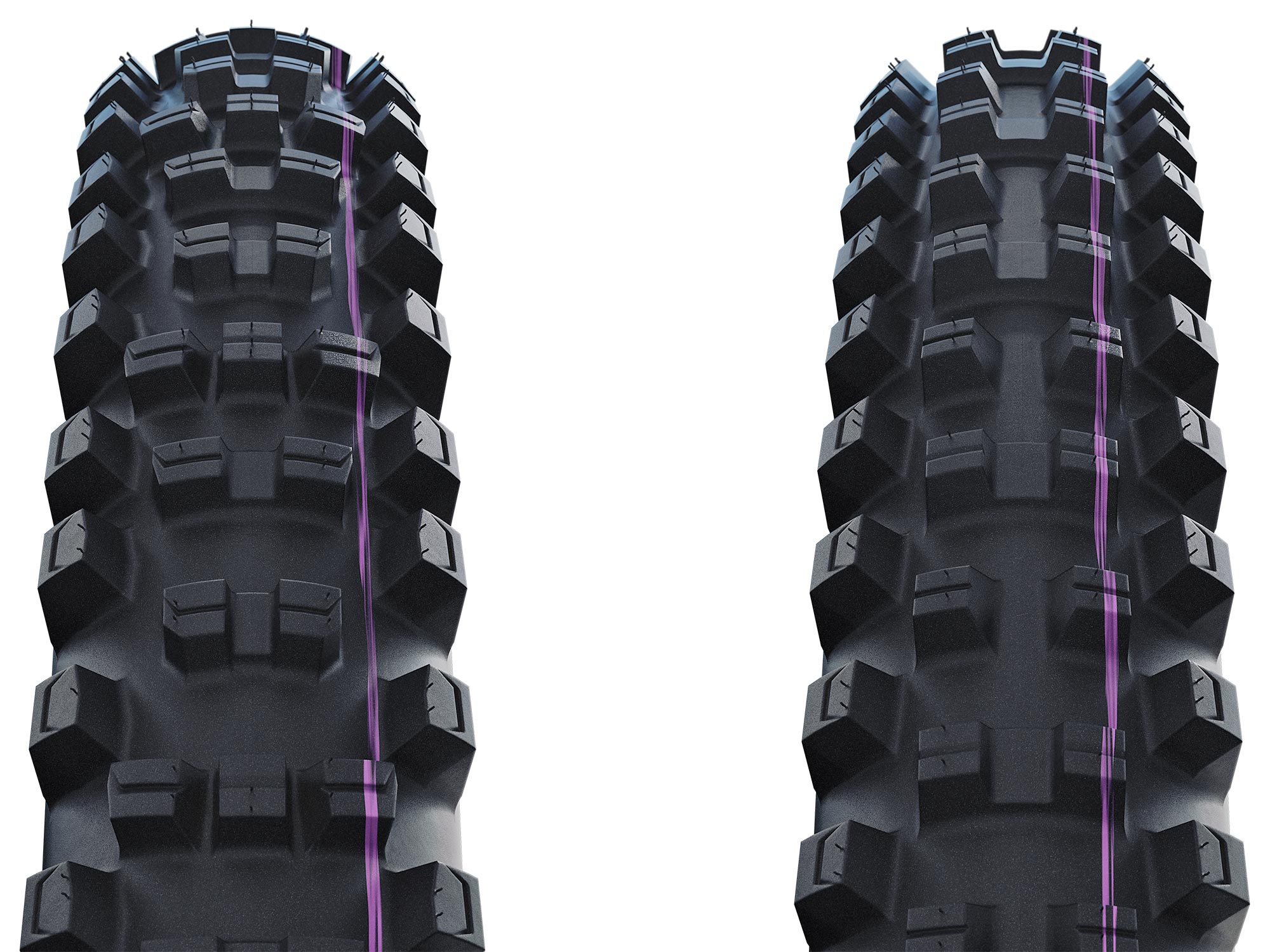
This is a tire for wet and muddy riding, or for flying down deep loamy trails. And it features linked central knobs for better support, especially on powerful, big-travel ebikes.
Schwalbe Radial MTB tires – Models, sizing, pricing & availability

The general idea with this all-new Schwalbe Radial mountain bike tire lineup is to offer a wide range for anyone riding long travel bikes (150+mm) across a range of conditions. That means aggressive trail, all-mountain, enduro, freeride & DH, plus ebike variations of any of those types of riding, too. So, that also means there are two casing levels – Trail with medium sidewall protection and Gravity with heavy-duty sidewall protection.
The tire options include the new Albert & classic Magic Mary which can be run on either front or rear, plus the new Shredda which is front- or rear-specific.
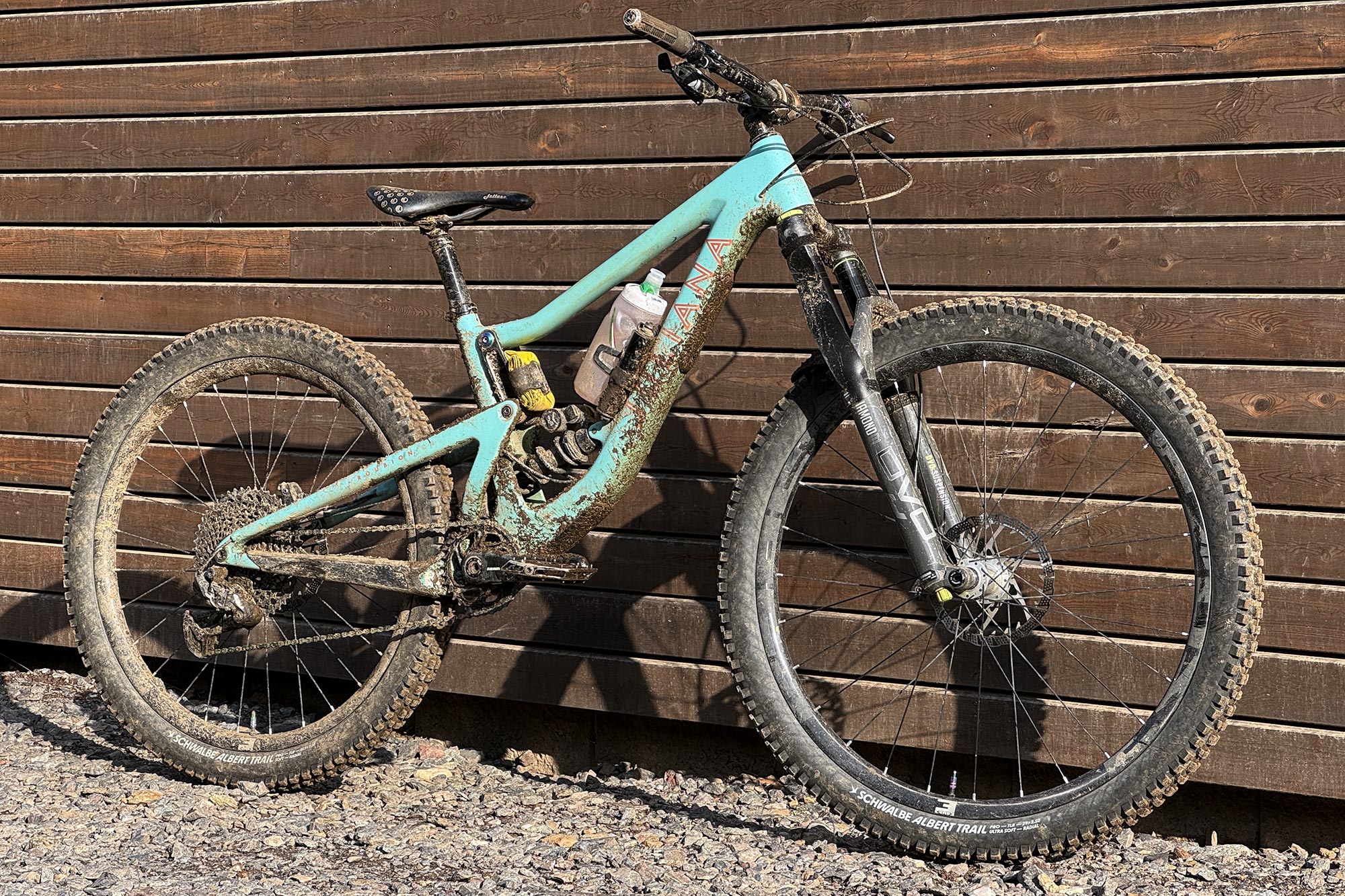
All of the tires come in 29″ and 27.5″ options (Shredda Front is 29er only) and in one width per tire. They are 2.5-2.6” wide because the taller, larger tire volume diameter tire benefits more from the new Radial construction. Addix rubber compounds are Soft or Super Soft for the Alberts, or Super Soft only for the more aggro treads.
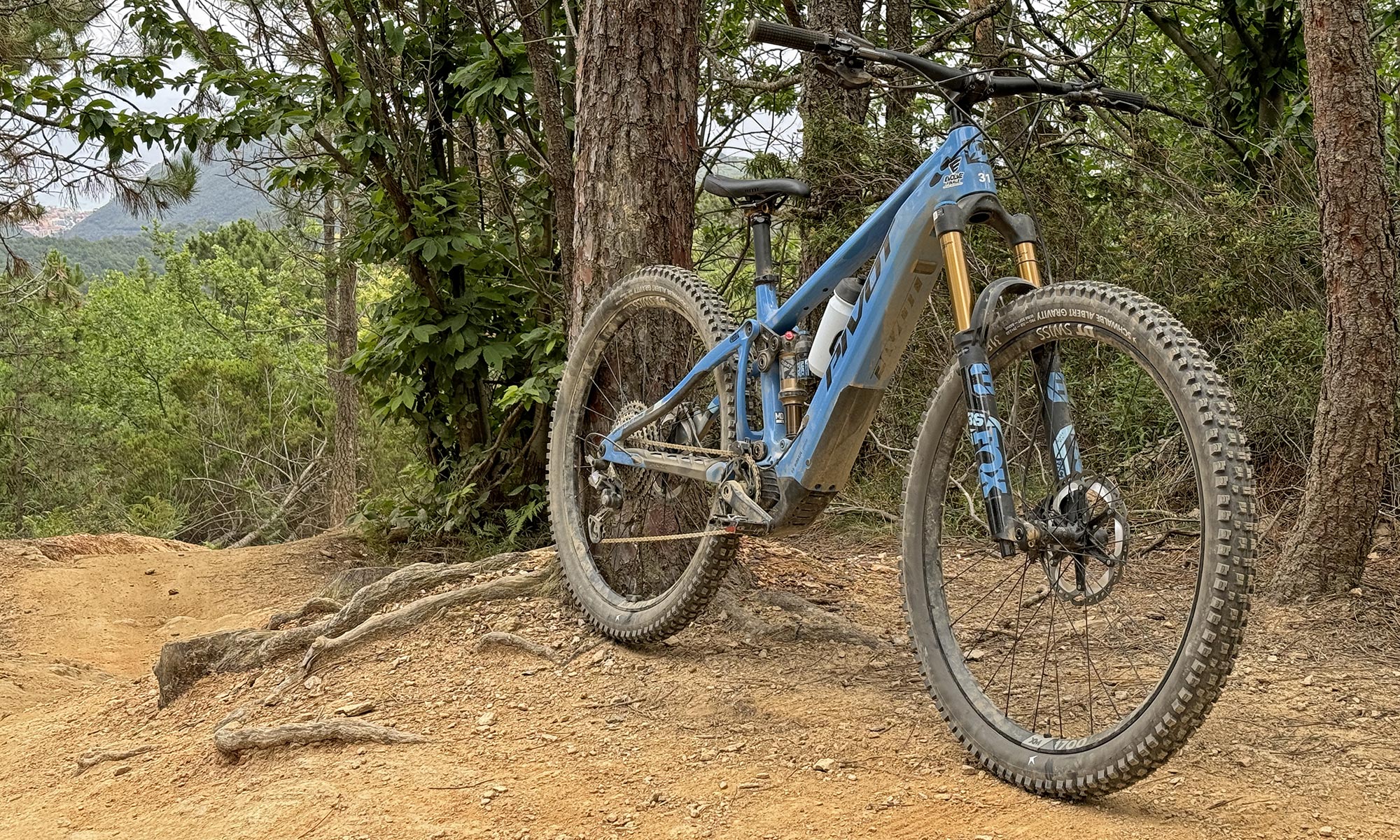
Schwalbe’s pricing is 74€ per tire for the Radial Trail tires, or 80€ for the Radial Gravity tires, with all available through retailers now. Even though it is as simple as how the fabric is oriented inside the tire when it is made, this feels like a real seismic shift in mountain bike tire construction. Keep your eyes peeled for our more detailed review of the Albert Trail & Gravity Radial tires, coming soon.
